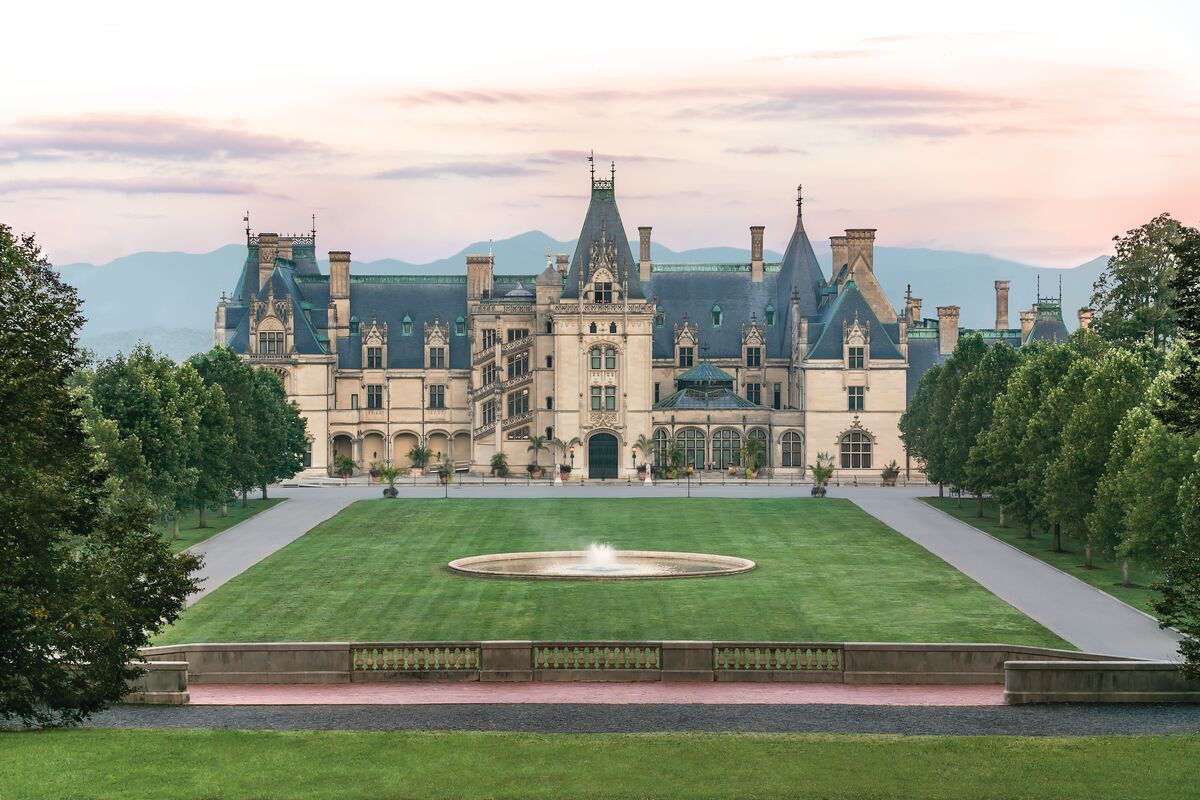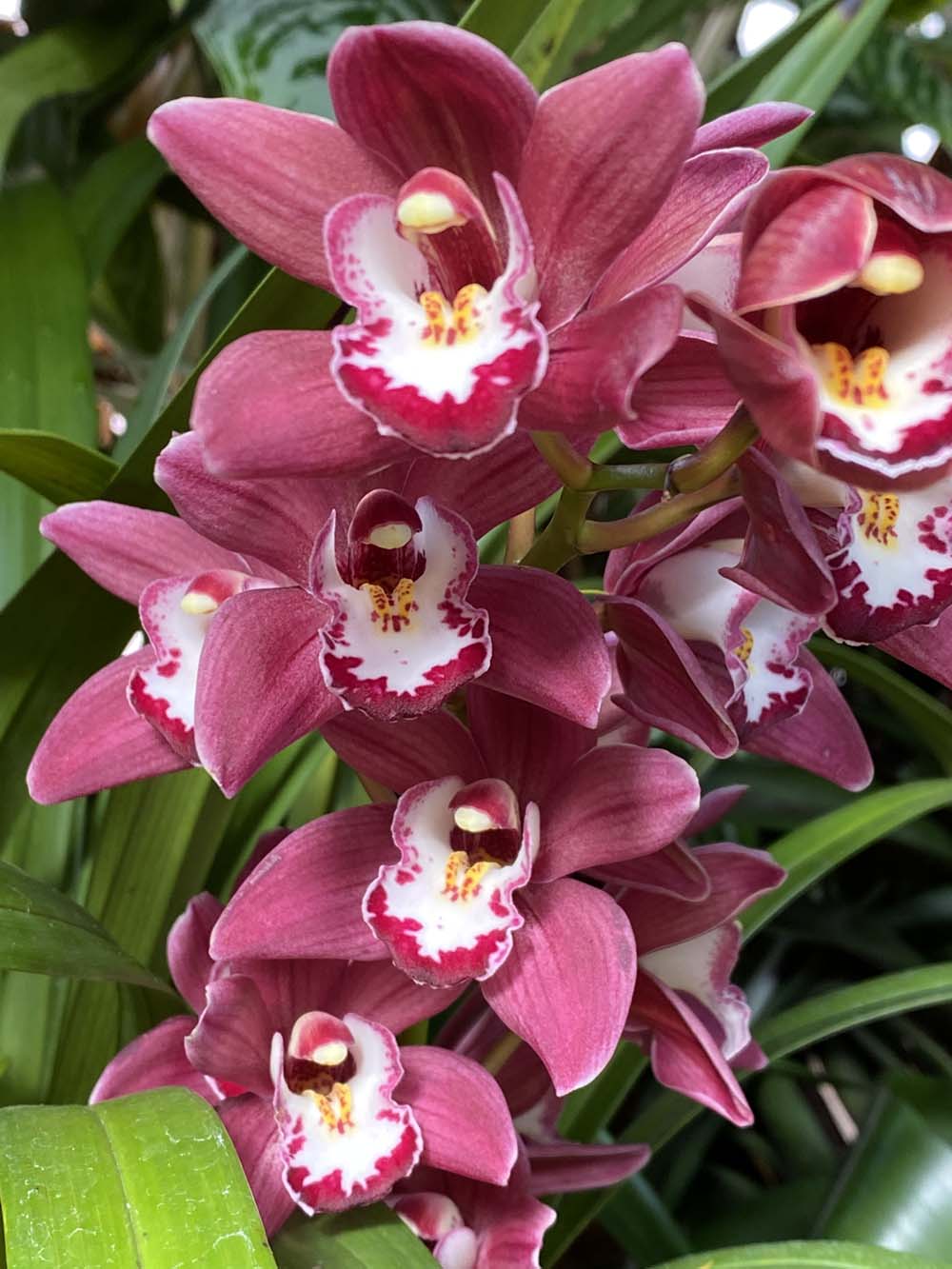
Phalaenopsis hybrid—one of the easiest orchids to grow at home.
Leave the dreary winter weather outside and enter the fascinating world of orchids in the Conservatory on the Biltmore Estate. Here extravagant orchid colors and forms refresh winter-weary spirits and delight the eye.
When George Vanderbilt collaborated with Richard Morris Hunt and Frederick Law Olmsted to design Biltmore House and gardens, they worked together to design the Conservatory at the same time. In 1889 Hunt wrote to Vanderbilt about the Conservatory, describing it as a “sheltered garden for Winter walking.” Both House and Conservatory were completed in 1895.

Biltmore House in Asheville, North Carolina. Richard Morris Hunt and Frederick Law Olmsted collaborated to design this estate for George Vanderbilt. Photo courtesy of The Biltmore Company
The Vanderbilt’s collection of orchids and other tropical plants was extremely fashionable in the nineteenth century when owners of grand estates in Europe and America competed to showcase their wealth and taste with lavish tropical displays. Orchid hunting reflected the Victorian passion for collecting unusual plants from the remote corners of the world: China, the Himalayas, Japan, Costa Rica, Southeast Asia, Australia—these faraway regions fired the imagination and passion to collect.

The Conservatory at the Biltmore Estate. Very fashionable in the nineteenth century, the Conservatory features a special room to display orchids.
Biltmore archives preserves a hand-written list of the orchids which Olmsted specified in 1895 for the Conservatory, 30 different species, 800 plants in all—a horticultural tour de force. Although none of these orchids were actually purchased at that time, today Marc Burchette, the head of Biltmore’s orchid collection, works to find these original orchid species and place them in the Biltmore collection. So far, he has succeeded in acquiring 50% of Olmsted’s original wish list. “I want more people to grow orchids,” Marc says. “That way there’ll be more orchids on the market and more varieties.”
Just as they did in George Vanderbilt’s time, orchids in the Conservatory today delight visitors in this “sheltered garden for Winter walking.”

Examples of Cymbidium hybrids (this photo and next).

For every orchid, the bottom-most petal has specialized into a lip inviting pollinators to land.
There are between 28,000 to 30,000 species of orchids in the world. Despite the dazzling array of color, size and form, every orchid has the same basic botanical form (morphology): this means every orchid blossom has three sepals and three petals. The bottom-most petal has specialized into a different shape, a lip where pollinators can land.
The special colors and markings on the lip are signals to the pollinator where to find the reproductive column with the pollinator’s food. Marc points out the colors and patterns we see on the lip of an orchid are not the same that pollinators see because insects see in ultraviolet light. “These markings on the lip are like the lights on an airplane runway at night, showing the pollinators where to land.” He adds, “Even though oceans and continents separate them, orchids all have this same morphology.”

Phalaenopsis ‘Baldans Kaleidoscope’. The colorful markings on orchids direct the pollinators where to find their food.
The subject of watering naturally arises because Marc says most people either overwater or underwater their orchids. The key to successful watering is to understand how most tropical orchids grow naturally in the wild. Most tropical orchids are epiphytes, which means they grow on a tree or other surface without harming their support. The orchid roots wrap around its support and, exposed to the humid air, gather moisture from the air and rain in the jungle. When you understand this, you see why excellent drainage is vital for tropical orchids that originally grew on trees.

Marc Burchette, in charge of orchids at Biltmore, holds Oncidium ‘Hauserman Copper Falls’. Note how the white roots are allowed to escape the pot.

Paphiopedilum insigne. This is one of the orchids originally specified by Olmsted in 1895 that Marc has been able to find and add to Biltmore’s collection today.
Asked how he pots his orchids, Marc exclaims, “Pots are for people—not plants.” For excellent drainage, he uses perlite and New Zealand Orchiata pine bark mix. Any white roots that protrude from the pot are left free in the air. He emphasizes that when orchids are watered, they must be allowed to drain free as they do in the jungle growing on a tree. He recommends a homeowner take his orchid to the sink and gently spray the whole plant, leaves, flower and roots and allow it to drain completely. Repot every two years because the bark will decompose.
“Phalaenopsis and paphiopedilum are the easiest orchids to grow,” he says, “because they like to live the way we do in the house.”
The orchid display reaches its peak blooming season at the Biltmore Conservatory in January, Feburary and March, and is just one of the estate’s winter attractions.
MORE ORCHIDS AT BILTMORE
Click the arrows (or swipe if on a mobile device) to see more
Text and photography Mary Walton Upchurch © 2021, Updated January 22, 2024.
Garden writer Mary Walton Upchurch grew up in Montgomery, Alabama, and earned a degree in landscape architecture from the Harvard Graduate School of Design. For more than 30 years, she practiced in Montgomery as an award-winning landscape architect and wrote garden articles for a local publication. Now retired, she lives in western North Carolina where she built a home and garden on top of a mountain with panoramic views of the Blue Ridge Mountains. Follow her on Instagram at @marywaltonupchurch.













